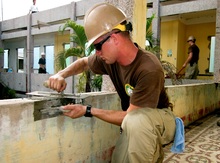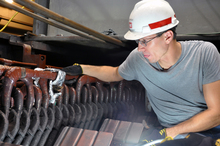The Benefits of a CMMS in Facility Management
Facility management includes any maintenance department that deals with living space, office space, commercial space, or recreation space. While there are obvious differences between such spaces, there are important points of similarity in maintenance needs:
- All such facilities must maintain high standards of appearance, comfort, and safety.
- Maintenance departments must satisfy those who use the facility (e.g. with timely and effective response to problem reports).
- Owners, managers, and workers must protect themselves against liability claims from anyone injured on the premises.
- Maintenance departments that provide service for paying tenants want to retain those tenants and keep a high occupancy rate.
How can a CMMS address these needs?
- Preventive maintenance scheduling ensures that boilers, air-conditioning equipment, service vehicles, etc. are maintained according to manufacturers' specs and good maintenance procedures.
- A CMMS makes it easy for workers to find information, including schematic drawings, blueprints, manuals, pictures, equipment specifications, and anything else that might be useful for a job.
- A CMMS can make sure that problem reports don't fall through the cracks. It can also track costs by tenant (when appropriate) to allow for back-charging or to justify costs at contract renewal time.
- When buildings are well-maintained and service is provided efficiently, tenants stay happy. This encourages high tenant retention and occupancy rates.
- CMMS data records exactly what work is done when. This can be invaluable evidence to support you in liability suits, proving that you conscientiously did what you were supposed to.
Tenant Retention
A recent survey calculated that the average annual turnover rate in rental properties was 59.1%. That means that every year, 59.1% of tenants move out...and the average cost to find new tenants is high. One source estimates a turnaround cost of $400-$1000 per unit, while another says it might be as high as $3000.
While some turnaround is inevitable, industry surveys estimate that 60% of tenants leave because of inadequate maintenance. Considering the cost of turnarounds (and the difficulty of attracting new tenants if a unit has obvious maintenance problems), good maintenance provides a tangible return on investment.




